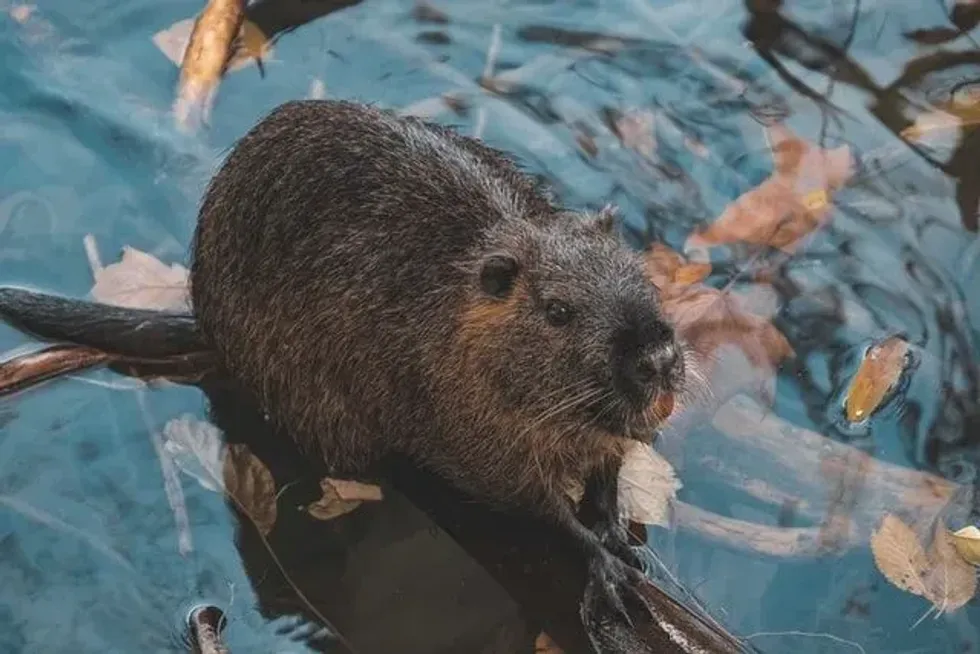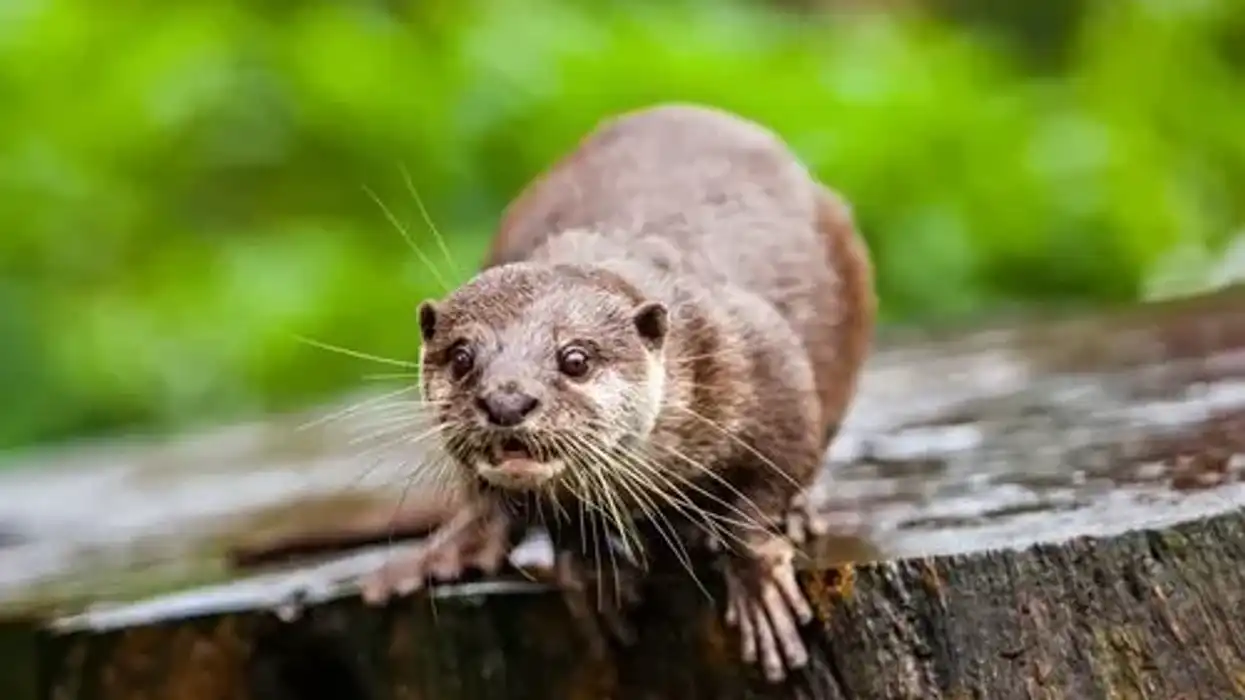Beavers are adorable and friendly creatures that possess incredible building skills. Just like children enjoy building with blocks or LEGOs, beavers like to construct fascinating structures called dams.
In this article, you'll be taken on an adventure to learn all about beavers, those busy builders with big teeth and paddle-like tails who are experts at creating their watery world.
From the way they chomp down trees to how they play with other beavers, you're about to find out some truly amazing facts about these creatures.
So come along and discover the amazing ways they can change rivers and forests with their two front teeth and a lot of hard work!
Beaver Interesting Facts
 Shutterstock
Shutterstock
What type of animal is a beaver?
Beavers are semi-aquatic mammals known for their amazing building abilities. Interestingly, North American beavers (Castor canadensis) are the largest rodents in North America.
What class of animal does it belong to?
Beavers are part of the broad animal group known as Mammalia, which includes your pet hamster and the acrobatic squirrels in the park. They belong to the class of mammals, which are warm-blooded creatures with fur or hair.
How many beavers are there in the world?
Counting all the beavers in the world might be as difficult as counting all the stars in the sky. However, with the help of people taking care of animals like beavers and contributing to their conservation after a decline due to hunting and trapping, beaver populations have been thriving.
Where do they live?
 Beaver sitting in a river, close upShutterstock
Beaver sitting in a river, close upShutterstockBeavers can be found in many places, from the lush woodlands of Oregon to the calm lakes of New York and even by the rushing streams in the mountains of Colorado. They live in various regions across North America and the quiet ponds of Europe, where they build their homes right by the water's edge.
What is their habitat?
The perfect home for a beaver has lots of trees and a water body. They use their strong teeth to chew and gather wood for their constructions. They love freshwater rivers, streams, and lakes where they can build their lodges and dams, which also serve as protection against their enemies.
Who do they live with?
Beavers are known for their strong family bonds and ability to create close-knit colonies. These cozy homes can consist of up to eight beavers, including the mom, dad, adorable baby beavers, and sometimes their siblings from the previous year.
They all live together in their lodge, share responsibilities like caring for the babies and gathering food, and work together on their awesome dam projects.
How long does a beaver live?
The North American beaver is known for its long lifespan. On average, they live for about 10-12 years, but some have been known to live up to 30 years. The Eurasian beaver, on the other hand, typically lives for about 7-8 years but can live up to 25 years.
It's fascinating to think that these creatures can live for so long, almost like going to school year after year, all while building impressive dams and lodges with their families.
How do they reproduce?
During spring, beavers focus on finding a suitable partner and starting a family. These mammals are monogamous, meaning they only have one partner at a time.
Once they have found their mate, they begin preparing for their offspring. The female beavers give birth to 1-4 kits inside the security of their well-built lodge after about 107-110 days, also known as the gestation period.
What is their conservation status?
It's all green lights for beavers on the conservation front, ranking them as Least Concern. However, maintaining clean rivers and safe forests is crucial to ensure that beavers always have healthy environments to thrive in.
Beaver Fun Facts
 Shutterstock
Shutterstock
What do they look like?
Imagine a furry friend wrapped up in a warm, brown coat with a wide tail that helps it turn and move in the water. Its front teeth are big and so tough that they can chew through tree trunks!
These teeth are really special because they keep growing, just like human nails. A beaver has cute, shiny eyes and neat little ears that can be seen through its thick fur.
Also, these clever creatures stand out with their famous flat, scaly tail. This unusual tail isn't just for looks; it helps them swim like pros, send danger signals with a loud splash, and even works like a built-in heater or cooler to help them feel right no matter the weather.
How cute are they?
Beavers might be among the cuddliest-looking animals in the wild. With their soft fur and the way they move around on land, it's easy to see why these creatures are considered super cute.
How do they communicate?
Beavers communicate with sounds, scents, and tail slaps on the water, which can be heard over long distances.
How big is a beaver?
These hard-working rodents are quite the heavyweights, sometimes reaching the weight of a big, friendly dog, up to 110 lbs (50 kg)! That's like carrying about six gallons of milk!
How fast can a beaver run?
Beavers might be champion swimmers, but they're not setting any speed records on land. They can move around quickly enough when needed, but they prefer to paddle in the water with their webbed hind feet (back legs).
How much does a beaver weigh?
An adult beaver can weigh between 24-71 lbs (11-32 kg). Interestingly, the heaviest beaver ever found weighed a whopping 110 lbs (50 kg), which is about the same weight as a large domestic dog!
What are the male and female names of the species?
Male and female beavers don't have special names; they are called beavers. They don't mind as long as they can keep building and swimming!
What would you call a baby beaver?
A baby beaver is called a kit.
What do they eat?
Beavers love to munch on tree bark, leaves, and aquatic plants.
Are they poisonous/venomous?
Beavers are gentle giants that won't bother you if you don't bother them. They're way more interested in trees and building dams or lodges than in causing trouble to humans.
Would they make a good pet?
Even though they'd score a ten on the cuteness meter, beavers need a river or a lake for a backyard, not a small pet house. They're happiest with lots of room to build and swim in the wild, not as pets.
Did You Know…
Every year on April 7th, International Beaver Day is celebrated to appreciate the amazing contribution of beavers to nature.
Did you know beaver teeth never stop growing? Their strong, orange teeth are constantly sharpened by munching on trees like nature's toothbrush!
Beaver fur, also known as beaver pelts, was highly valued by people as it provided extra warmth and comfort. It was used to create fancy robes, cozy coats, and stylish trims for their sleeves. Beaver fur was even used to make tall, fancy top hats. However, nowadays, beavers' fur looks best on the beavers themselves, and there's no longer a need for the fur trade.
Baby beavers, called kits, are born with fur and can swim within 24 hours of birth.
The Smithsonian's National Zoo is like a real-life animal wonderland, where you can meet incredible creatures, including a pair of famous beavers named Aspen and Juniper.
Did you know that beavers are selective eaters and have a particular liking for aspen and willow trees? As the leaves begin to fall and the weather starts to get colder, they gather their favorite snacks and store them underwater so that they can enjoy them even when it snows outside. It's like having a secret stash of delicious food just for them!
FAQs
Can beavers really change the environment?
Yes! Beavers are known to use their strong teeth to build awesome dams in rivers. These beaver dams create ponds where they can live and play safely. Only a few animals can change their environment as much as beavers can. By building dams, they change streams into ponds, making new homes for many other creatures.
How do beavers stay underwater for so long?
Beavers have a cool trick up their furry sleeves. They can hold their breath underwater for a long time, up to 15 minutes! Their big lungs are like extra-large balloons that store more air, allowing them to go on long underwater treasure hunts.
Beavers have a transparent eyelid, which acts as goggles and helps protect their eyes while swimming. In addition, they possess special valves that can close their ears and nostrils when they dive, thus preventing water from entering.
Now, here's some science magic. Their muscles have this special stuff called myoglobin that keeps oxygen tucked away so they can stay underwater longer, just like a submarine! Also, when beavers dive, they slow their heartbeat, and their body ensures all the important parts, like the brain and heart, get plenty of blood.
Last but not least, beavers can chomp on sticks underwater without getting a mouthful of water because they can close their lips behind their big front teeth.
Are North American and Eurasian beavers the same?
They are cousins but not the same. The North American beaver is a busy little animal that lives in places like the United States and Canada. It's pretty big for a beaver, and it can weigh as much as a big dog! It has a wide, flat tail that looks like a paddle and helps it swim really well. Its fur can be shades of brown and sometimes even a bit red.
The Eurasian beaver is its cousin, and it lives across the ocean in places like Europe and parts of Asia. Depending on the region, its fur can be reddish-brown.
Even though they are cousins, they can't have baby beavers together because they are too different. They love to chew on trees and build homes in the water, but they each have their own style and live in different parts of the world.
What happens when beavers slap their tails on water?
Beavers slap their tails on water to warn other beavers of potential danger and scare away predators. This behavior expresses aggression and curiosity and is common among males.
The beaver, with its diligent habits and fluffy appearance, has captured the hearts of many. These creatures are responsible for building dams that benefit the environment and serve as cozy homes for their families. Understanding and respecting the role of beavers is essential for ensuring that they continue to thrive in the wild for generations to come.
Related Articles Around the Web




 Shutterstock
Shutterstock Beaver sitting in a river, close upShutterstock
Beaver sitting in a river, close upShutterstock Shutterstock
Shutterstock



